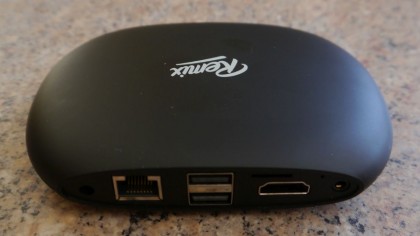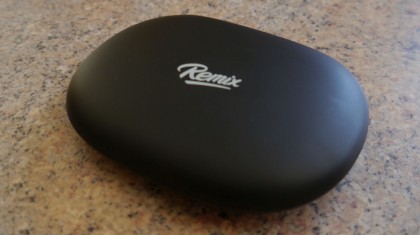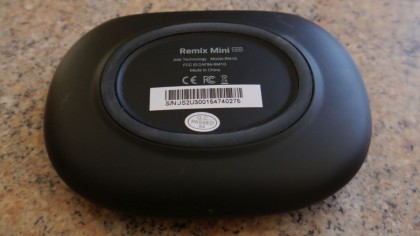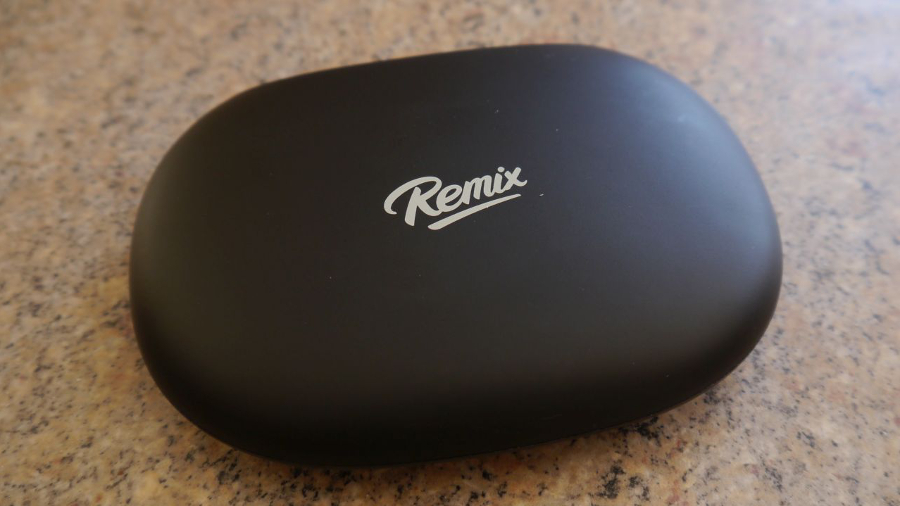Early Verdict
Should you buy the Remix Mini, be aware of its limitations – this is a £40 PC and no one should expect it to perform on par with one costing triple the price.
Pros
- +
Wired Ethernet
- +
Value for money
- +
True desktop-like experience
Cons
- -
Capacitive touch button
- -
One USB 3.0 port would have helped
Why you can trust TechRadar
The history of alternative operating systems is littered with dead bodies from big and small companies – from the mighty IBM and the mightier Intel to smaller corpses (Lindows anyone?), there have been dozens of companies trying to break the stranglehold of Microsoft back in the day, then Google's Android later on.
Failure to do so could vaporise tens of billions of pounds off a company's value; Nokia and Motorola know a thing or two about that.
Now, a small company called Jide is trying to challenge both Microsoft and Google with a little operating system called Remix OS. In reality, the latter is not an entirely new venture but is, in fact, based on Google's Android which is itself an open source project.
We came across Jide and Remix OS a few weeks ago when reviewing the Onda OBook 10 SE (check the review for a bit more background) and this time around, Gearbest sent us a sample of Jide's very own take on the modern computer, the Remix Mini PC which is the product of a successful Kickstarter campaign.
At just over £40 including delivery (around $52, AU$70), it is one of the cheapest mini PCs on the market, regardless of the OS, to offer 2GB of RAM. Note that if you're thinking of a purchase, we strongly advise you to read our article on the pros and cons of buying from Chinese retailers (and generally speaking, outside of the UK).
The Remix Mini looks like a pebble from afar, with a curved body devoid of any edges as such. Black in colour, it comes with a 10W (5V2A) power supply unit and an HDMI cable as well as a couple of leaflets.

There's a green status LED at the front, a pair of USB 2.0 ports on the back together with a full-size HDMI connector, an audio port, a microSD card slot and a 10/100Mbps Ethernet port.
Sign up to the TechRadar Pro newsletter to get all the top news, opinion, features and guidance your business needs to succeed!
Our model came with 2GB of RAM and 16GB on-board storage. A cheaper variant with half the memory and half the storage is also available although we'd strongly advise you to avoid it.
Both models come with a quad-core Allwinner system-on-chip based on ARM's Cortex-A53 technology and clocked at 1.2GHz. Because the device doesn't have an active fan, it ran a tad warm in operation; although not to any worrying extent.

As expected, you get 802.11n Wi-Fi as well as Bluetooth 4.0. The Remix Mini supports 4K decoding but since it can only output at full HD, this won't matter much.
Using the device was very intuitive – just plug in everything and switch it on by tapping on the Remix logo on top. Jide opted for a capacitive button which we disliked thoroughly as merely touching the logo would send the device to sleep.
We updated the Remix OS to version 2.0.604 (based on Android 5.1) and there is an option to enrol in a scheme similar to Microsoft's Windows Insider program, allowing you to beta test the operating system. The update process took minutes rather than hours as some reported online, with a fairly straightforward setup.
Compared to stock Android, Remix OS offers useful features such as native multi-tasking, a file manager, a taskbar, an option bar on the right, right click menu, shortcuts and a start menu that make it look more like Windows than anything produced by Google.

Windows can be resized, minimised and maximised – snap to borders and Windows-based resizing shortcuts didn't work, though. Applications bundled included the usual suspects from Google (Play Store, Movies, Docs, Sheets, Gmail and Chrome) as well as a flurry of others from partners, one of which is Kodi.
Performance was acceptable and, in a thin client configuration, would be more than adequate. Even on a full HD display, light web browsing or playing YouTube videos proved to be as intuitive as on an Android tablet, except you do it with a keyboard and a mouse rather than a touchscreen display.
Early verdict
Devices like the Remix Mini could transform Google's Android into a very cheap, almost free alternative to Windows for very small businesses that require internet access or operate mostly in the cloud.
The fact that it can be plugged into most recent displays with an HDMI connector paves the way for some interesting configurations like powering a digital signage solution or a standalone kiosk. Having a wired connectivity option (hello Ethernet port) and no fans or vents does help as well.
It's hard to fault the Remix Mini at this price – especially with the desktop experience – and the productivity aspect is particularly enticing if you are already using Google Apps, Microsoft Office Mobile or OfficeSuite.
That said, Chrome OS is fairly similar to Remix OS – both are designed as 'desktopified' Android – and while devices running the former might not be as affordable as the Remix Mini, the fact is that you can go in a high street store and buy one like the Lenovo N22 Chromebook.
For small businesses, there's also the appeal of having a company like Google providing support for Chrome OS rather than a much smaller company in a far, far away country.
- Also check out our 10 best office apps for Android

Désiré has been musing and writing about technology during a career spanning four decades. He dabbled in website builders and web hosting when DHTML and frames were in vogue and started narrating about the impact of technology on society just before the start of the Y2K hysteria at the turn of the last millennium.
What is a hands on review?
Hands on reviews' are a journalist's first impressions of a piece of kit based on spending some time with it. It may be just a few moments, or a few hours. The important thing is we have been able to play with it ourselves and can give you some sense of what it's like to use, even if it's only an embryonic view. For more information, see TechRadar's Reviews Guarantee.
